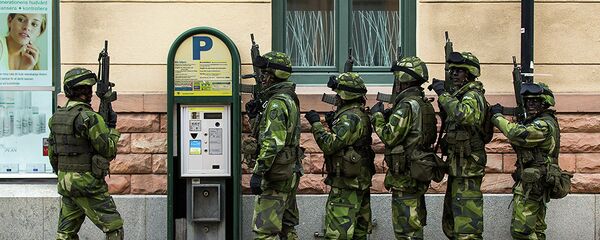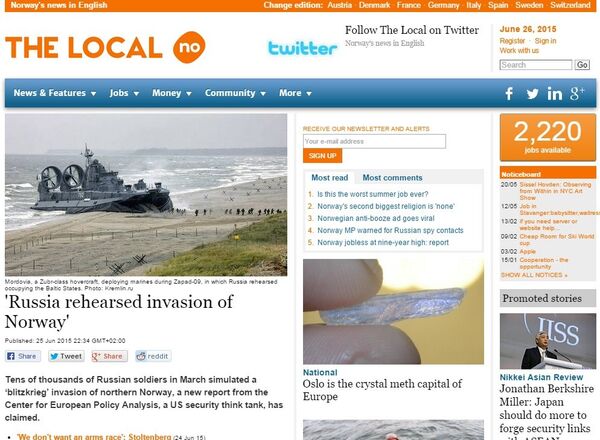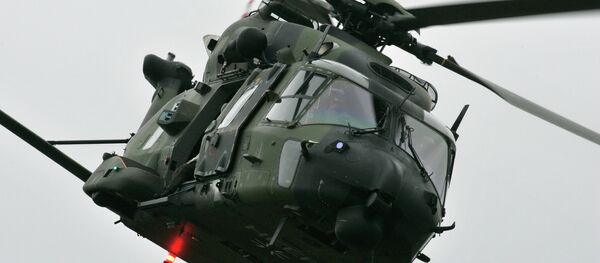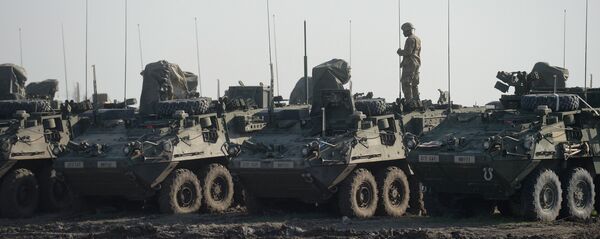Media in Northern European countries widely reported on Friday that Russia is apparently rehearsing invading and conquering the region, based on a paper released by a US think-tank.
The media reports are based solely on a paper by the US-based "Center for European Policy Analysis," called "The Coming Storm," which claims that Russian military exercises are actually rehearsals of conquests in the Nordic region. The paper does not cite any sources for its claims for Russian "invasion" plans except media reports, many of which come from the same media that reported on the news story. The paper is authored by British journalist Edward Lucas.
The paper also claims that Russian Arctic drills in March 2015 were in fact a rehearsal of the invasion of Finland's Aland Islands, "the Swedish island of Gotland and the Danish island of Bornholm" in the Baltic, together with parts of Norway. Norway's The Local presented the claim with the headline 'Russia rehearsed invasion of Norway' with an image of a Russian hovercraft on a beach in 2009.
Norway's actual coastline is dominated by fjords, narrow inlets with steep cliffs formed by Ice Age glaciers.
The exercises, which took place in Russia's Arctic territories involved its Northern Fleet, which is not stationed in the Baltic. In Finnish media, the article on the paper was illustrated with a documentary segment about a Russian anti-piracy exercise in which approximately 20 border guards on a patrol boat storm an island pirate base and promptly leave. The exercise took place in Russian waters not far from Saint Petersburg.
Russian Presidential chief-of-staff Sergei Ivanov previously commented on Baltic countries' allegations that Russia is being "aggressive," calling the idea that Russia would invade "sick." Ivanov added that the idea of Russia attacking Baltic countries would be "suicidal" for it and that the actions of said countries appear to seek larger defense expenditures for other countries.
"This is of course being done consciously by the Baltic states themselves in order to receive money from you," Russian Deputy Prime Minister Sergei Ivanov told Financial Times in an interview published on June 21.
"You will be forced to ready your soldiers, to send your aircraft there, to spend your defence budget for unnecessary purposes. That’s the idea," Ivanov added.
Latvia's ambassador to NATO Maris Riekstins echoed the views on Thursday following a meeting of NATO defense ministers.
"I believe that there is no direct military threat for Latvia. Residents need to understand that we do not think with such categories as a threat to Latvia separately from NATO, because it would be a threat to NATO," Riekstins said.
Riekstins added that Russian airplanes, often reported in media as "threats," have not entered Latvia's airspace over the past year "even for a minute."
Estonia's Exercises
The paper also claims that that "Russia's game plan" could include "rapid Russian intervention in Estonia in support of Russian-speaking separatists there." The report does not explain exactly what "Russian-speaking separatists" exist in Estonia.
The photographs and footage are then used by "Aslavia" to allege that the incident was no accident and rumors are spread on the internet that the attack was organized by nationalists against the country's ethnic minority. The event leads social order to break down in nearby cities, with people requesting help from "Aslavia's" president.
In the scenario, the Estonian government failed to deal with the crisis. Budget cuts which stripped away the country's public alert system failed to warn residents.
An industrial accident with a fire did actually take place on June 9. Although it did not lead to panic and the breakdown of order as in the Estonian exercise, local residents complained of not being warned about the accident by the local government. The exercises in this way appear to show that Estonia has more issues with its government's management of emergencies rather than national security issues.






